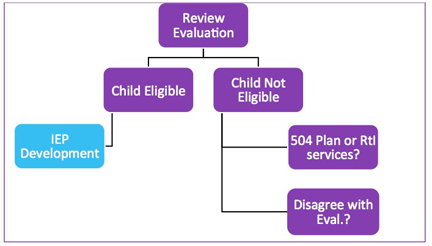en Español • Share • 
The evaluations and ARD committee determine a child is eligible when a child meets the following criteria:
- The child has a disability, and;
- As a result of the disability, the child needs special education services or related services to benefit from education.
In other words, if a child has a disability, but does not need special education or related services to benefit from education, then the child is not eligible for services.
A child is also not eligible for special education services if the child’s difficulty is mainly due to not having enough instruction in reading or math, or due to limited English skills.
To add to this, note that a child with a medical diagnosis does not automatically qualify for special education services. Eligibility is decided based on the type of medical diagnosis and whether the diagnosis affects the child’s education.
It is important for parents to understand the difference between a child’s medical diagnosis and the disability categories that determine whether a child is eligible for special education services. For IDEA’S definition of a "child with disability" and a list of the 13 different disability categories, go to Diagnosis vs. Disability Category, Defining "Eligibility.”
If your child is not eligible, the school district must:
- Have an ARD meeting with you to go over the evaluation report and your procedural rights
- Send you Prior Written Notice – a letter that states the reason(s) why your child is not eligible, and the steps you can take if you disagree with the decision.
Children not eligible for special education or related services, but who still need help and or accommodations to benefit from education, have the following options:
- Be connected to the “campus-based support team.” This team may have different names in different schools. Bottom line, this is the team responsible for discussing planning and putting into effect (if one is not in place yet) the Response to Intervention (RtI) plan for your child. If this plan the campus based support team may include additional or new Tier 1, 2, or 3 services.
- Obtain support services and accommodations under Section 504, or create a 504 plan.
You have a right to disagree with the evaluation and follow the next steps in the process.

